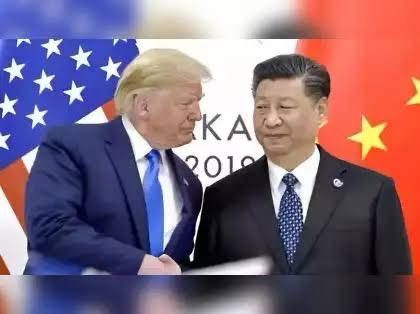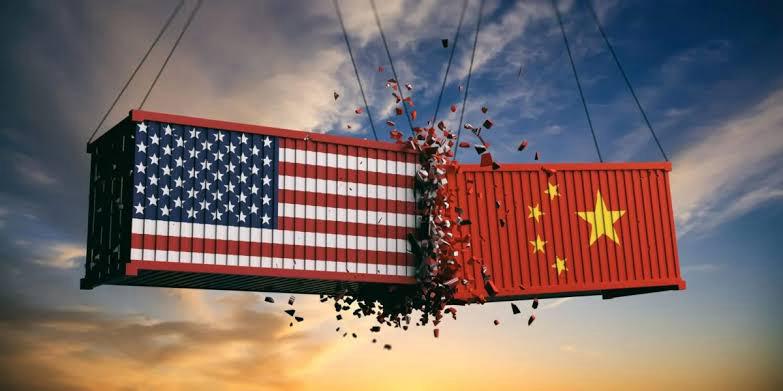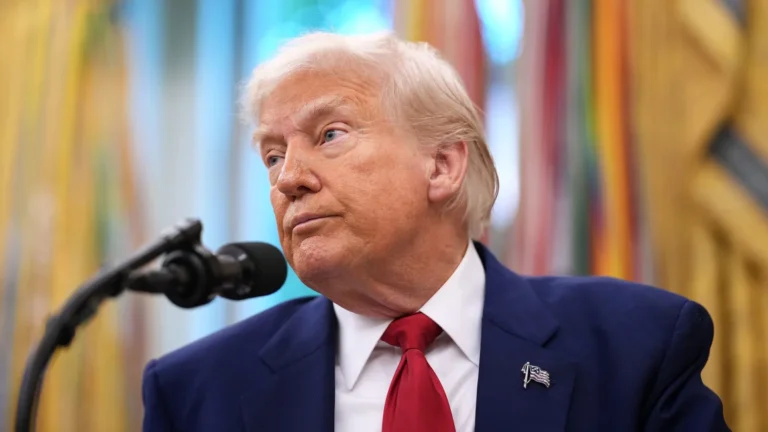
China Increases Retaliatory Tariffs on US Imports to 125% Amid Trade Tensions
In a move that further escalates tensions between the world’s two largest economies, China has today announced a significant increase in its retaliatory tariffs on US imports. The tariffs, which were initially set at 84%, will now rise to a hefty 125%. The decision, made public through a press briefing by the State Council Tariff Commission, underscores China’s growing frustration with the ongoing trade dispute between the two nations.
The Commerce Ministry Spokesperson in Beijing, during the briefing, emphasized that the new tariff rate would serve as the ceiling for any future tariff adjustments. The spokesperson reiterated China’s stance that these tariffs were a direct response to the excessive trade measures imposed by the United States over the past years. The spokesperson also suggested that these measures had little real economic impact and were primarily used as a tool of political leverage, further complicating the already fragile trade relations.
“The successive imposition of excessively high tariffs on China by the United States has become nothing more than a numbers game, with no real economic significance. It further exposes the US practice of weaponizing tariffs as a tool for bullying and coercion, turning itself into a joke,” the spokesperson said. This statement highlights China’s increasing frustration with the approach taken by Washington in what has been a long-running trade war.
This latest move comes at a time when both countries have already been locked in a trade dispute for several years. Starting with the imposition of tariffs by former President Donald Trump, the US-China trade war has been marked by frequent rounds of retaliatory measures. The US initially targeted a wide range of Chinese goods, citing unfair trade practices, intellectual property theft, and other grievances. In retaliation, China has imposed its own tariffs on US products, including agricultural products like soybeans, and a variety of other goods.
While the US government has argued that these tariffs were designed to level the playing field and address China’s trade practices, the economic impact of these tariffs has been a subject of debate. Analysts have pointed out that while the tariffs hurt specific industries, they have had limited success in changing China’s behavior. Some experts argue that the long-term effects of the trade war, including disrupted supply chains, increased costs for consumers, and volatility in global markets, may outweigh any short-term economic gains.
China’s response, which now includes the imposition of tariffs as high as 125%, is seen as an attempt to counter the growing pressure from the US. The Chinese government has repeatedly stated that it will not engage in what it considers a “numbers game” of escalating tariffs, but it has also made it clear that it will take countermeasures if the US continues with actions that harm Chinese economic interests.
“If the US insists on continuing this numbers game with tariffs, China will not engage,” said the spokesperson. “However, if the US persists in substantively harming China’s interests, China will resolutely take countermeasures and fight to the end.” This statement signals China’s readiness to continue its resistance and highlights the increasingly contentious nature of the trade relationship between the two countries.
he broader geopolitical context of this trade dispute is important to understand as well. The US-China trade war is not only about tariffs and trade imbalances but is also a manifestation of the larger struggle for global influence between the two powers. Both nations have increasingly seen the issue through the lens of national security and technological dominance. For China, this dispute is not only about securing fair trade but also about asserting its growing influence on the world stage, particularly in fields like technology, artificial intelligence, and telecommunications. For the United States, the trade war is part of a broader strategy to curb China’s rise and ensure that the US maintains its competitive edge.
The escalation of tariffs also has significant implications for the global economy. Both China and the United States are major players in global trade, and any disruptions to their economic relationship can ripple out to affect other countries. Many nations have found themselves caught in the crossfire of this dispute, as businesses face higher costs and supply chains are disrupted. Countries that rely heavily on trade with China, such as those in Asia, have seen their economies affected by the fluctuations in Chinese demand. Meanwhile, the US has also faced some pushback from its own industries, which have found it difficult to adapt to the higher costs brought about by the tariffs.
The new 125% tariff will likely have a significant impact on certain sectors of the US economy. US exporters, particularly in the agriculture and manufacturing sectors, may struggle to maintain their market share in China. American farmers, already hit hard by previous tariff rounds, may face even steeper losses as China turns to other suppliers for crops like soybeans. At the same time, Chinese consumers may see higher prices for a range of goods that were previously imported from the US.
China’s Stand and the Future of US-China Relations
Looking ahead, the future of US-China relations remains uncertain. The Biden administration, which has largely continued the policies of its predecessor, faces growing pressure both domestically and internationally to address China’s trade practices. However, with tariffs continuing to rise and both sides entrenched in their positions, finding a path toward resolution seems increasingly difficult.
China has made it clear that it is willing to weather the storm and is prepared to take further action if necessary. “China will resolutely take countermeasures and fight to the end,” the spokesperson warned, signaling that the conflict is far from over.
For businesses and policymakers around the world, the ongoing trade war between China and the US is a reminder of the unpredictable nature of global trade in the 21st century. Whether this latest round of tariff increases will lead to a breakthrough or an intensification of the conflict remains to be seen, but one thing is clear: the economic rivalry between the two superpowers is far from resolved.
For more on the ongoing US-China trade relations, visit Reuters and The Financial Times.




